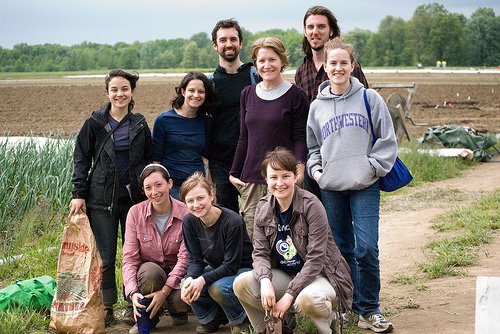Farm Notes by Benjamin
Hearty Roots was in need of some new storage space this year. As our
membership has grown, so has our need for shelter for some of our new
equipment-- a bigger cooler, another cultivating tractor-- and a
place to eat lunch together when it's raining! It sure would be nice
to build a big barn for it all, but for us, that's not an option.
Because we rent land, investing in a barn (which might last for may
decades, but is expensive to build) doesn't work out financially. So
we started weighing our options: build a less permanent structure
from wood; rent barn space; at one point sewing fitted covers for
our tractor implements was even considered.
We decided to build a shelter using a greenhouse frame. As I write we
are putting the finishing touches on our new 48' x 30' hoop structure.
It should be strong enough to withstand winter snow and wind, but it
was relatively inexpensive to build. The best part is, if we come
across other storage options down the road, we can re-purpose this as
a new greenhouse.
The other benefit of our new structure is where it came from-- after
pricing greenhouse frames from some bigger commercial operations, we
discovered a farmer in New Hampshire who has made a side-business from
building frames for other farmers. He uses better quality parts and
charges a bit less than the big guys, and we feel good about
supporting another farmer. On top of that, he delivered the frame to
us personally, and gave us tips on putting it all together.
Of course, this project was supposed to be finished two months ago,
when there wasn't so much going on in the fields-- but it's about
done now, and we're running around to keep up with all the veggies as
well. Hope you're enjoying them!





